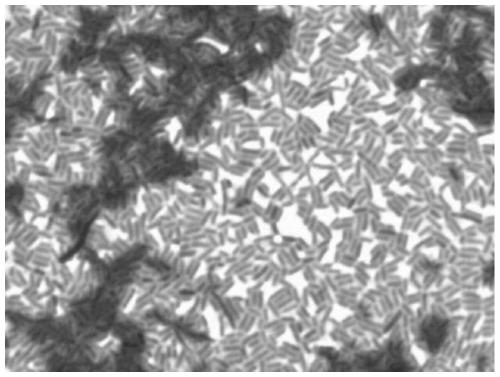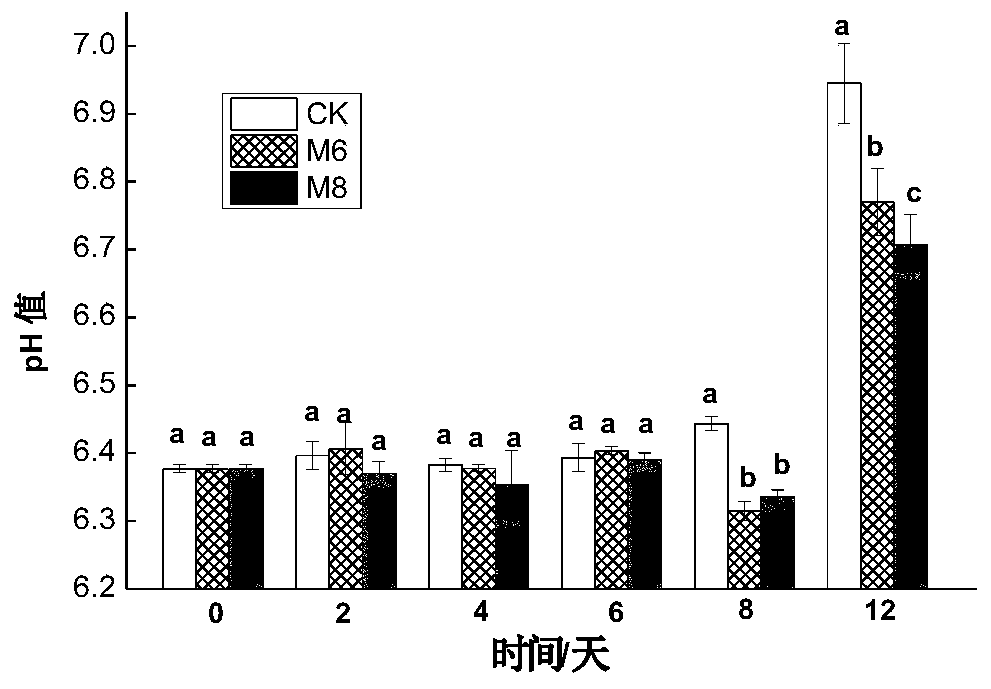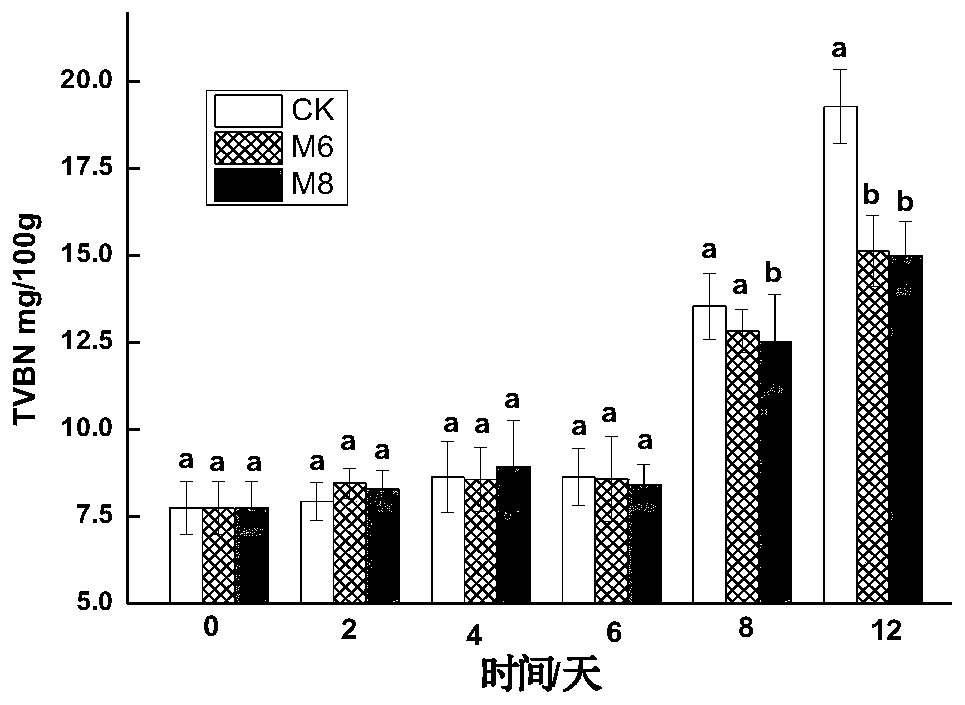Lactobacillus sakei B2-4 and application thereof in fresh-keeping of aquatic products
A technology of Lactobacillus sake and aquatic products, applied in the direction of Lactobacillus, application, and preservation of meat/fish with chemicals, etc., can solve the problems of fish meat cell damage, sensory score decline, and reduced added value, etc., to extend shelf life and stabilize The effect of sensory quality
- Summary
- Abstract
- Description
- Claims
- Application Information
AI Technical Summary
Problems solved by technology
Method used
Image
Examples
Embodiment 1
[0035] Lactobacillus sake B2-4 of the present invention is screened in the intestinal tract of turbot, and the specific steps are as follows:
[0036] a. Strain isolation method
[0037] (1) Preparation of MRS medium
[0038] According to 20g / L glucose, 10g / L peptone, 5g / L yeast extract, 10g / L beef extract, 1mL Tween 80, 2g / L dipotassium hydrogen phosphate, 2g / L diammonium citrate, 5g / L sodium acetate, 0.58g / L magnesium sulfate heptahydrate, 0.25g / L manganese sulfate tetrahydrate, these raw materials were weighed, mixed uniformly, the obtained mixture was miscible in deionized water, and the obtained solution was sterilized at a temperature of 121°C for 20min to obtain The MRS medium.
[0039] Take the intestinal tissue of turbot, weigh 1g sample and put it into 4ml sterilized physiological saline with a concentration of 0.85% by weight, use the ten-fold dilution method to carry out gradient dilution of the sample, and then spread it on the step containing 2% agar (1) In th...
Embodiment 2
[0056] The purpose of Lactobacillus sake B2-4 of the present invention in fresh carp and fish meat biological preservation, fresh carp and fish meat biological preservation steps are as follows:
[0057] (1) Preparation of MRS medium: 20g / L glucose, 10g / L peptone, 5g / L yeast extract, 10g / L beef extract, 1mL Tween 80, 2g / L dipotassium hydrogen phosphate, 2g / L dicitric acid Ammonium, 5g / L sodium acetate, 0.58g / L magnesium sulfate heptahydrate, 0.25g / L manganese sulfate tetrahydrate, these raw materials are weighed, mixed uniformly, the obtained mixture is miscible in deionized water, and the obtained solution is at temperature Sterilize at 121° C. for 20 minutes to obtain the MRS medium.
[0058] (2) Activated strains: inoculate the cryopreserved Lactobacillus sake B2-4 in the MRS medium obtained in step (1) containing 2% agar, culture at a constant temperature of 37°C for 24 hours, and pick a single colony Cultivate in the MRS medium obtained in step (1) for 18 hours.
[0059...
Embodiment 3
[0065] The purpose of Lactobacillus sake B2-4 of the present invention in fresh carp and fish meat biological preservation, fresh carp and fish meat biological preservation steps are as follows:
[0066] (1) Preparation of MRS medium: 20g / L glucose, 10g / L peptone, 5g / L yeast extract, 10g / L beef extract, 1mL Tween 80, 2g / L dipotassium hydrogen phosphate, 2g / L dicitric acid Ammonium, 5g / L sodium acetate, 0.58g / L magnesium sulfate heptahydrate, 0.25g / L manganese sulfate tetrahydrate, these raw materials are weighed, mixed uniformly, the obtained mixture is miscible in deionized water, and the obtained solution is at temperature Sterilize at 121° C. for 20 minutes to obtain the MRS medium.
[0067] (2) Activation of strains: Streak inoculation of cryopreserved Lactobacillus sake B2-4 in the MRS solid medium obtained in step (1) containing 2% agar, culture at a temperature of 37° C. for 48 hours, and pick single The colonies were cultured in the MRS medium obtained in step (1) for...
PUM
 Login to View More
Login to View More Abstract
Description
Claims
Application Information
 Login to View More
Login to View More - R&D
- Intellectual Property
- Life Sciences
- Materials
- Tech Scout
- Unparalleled Data Quality
- Higher Quality Content
- 60% Fewer Hallucinations
Browse by: Latest US Patents, China's latest patents, Technical Efficacy Thesaurus, Application Domain, Technology Topic, Popular Technical Reports.
© 2025 PatSnap. All rights reserved.Legal|Privacy policy|Modern Slavery Act Transparency Statement|Sitemap|About US| Contact US: help@patsnap.com



